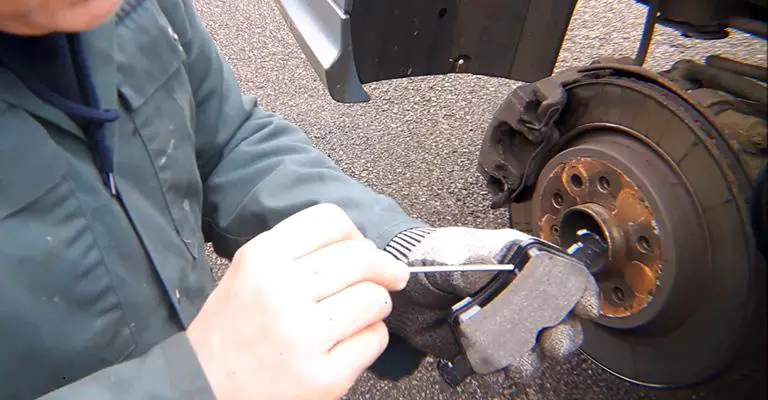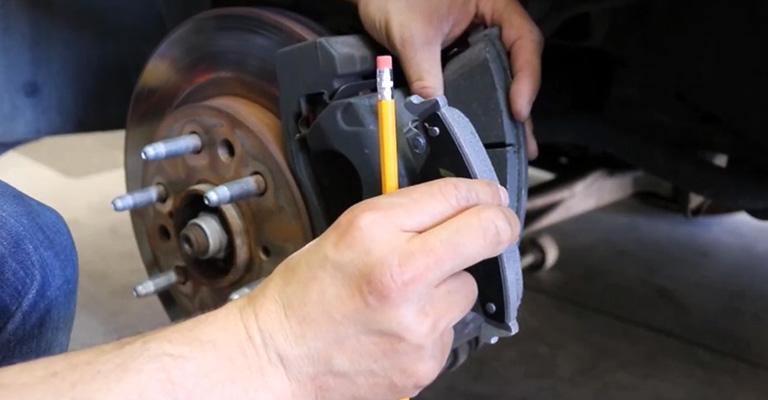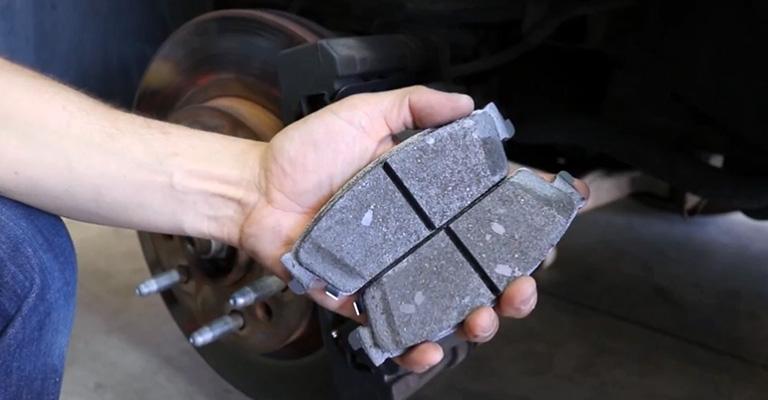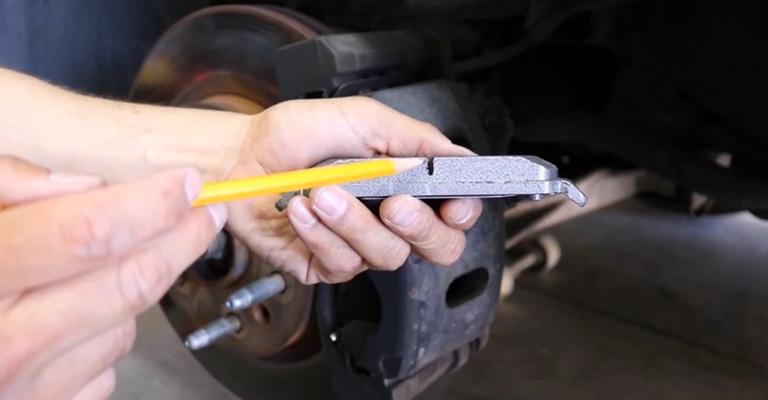The brake Pad thickness determines how much brake material your car has left to perform braking actions. Ideally, the thickness should be more than 6.4 mm to perform effectively. However, you can still get away with thinner pads as long as it’s not less than 3.2 mm. But it’s not recommended by automotive experts.
Contents
How Many MM Is Safe On Brake Pads
The brake pad is a kind of pad made out of friction materials, that’s pressed against the brake rotor to perform brake action. These pads constantly rub against the rotor and wear out which is why they have a short lifespan. The ideal thickness of the brake pad is over 6.4 mm which is recommended by most manufacturers.
A brand-new brake pad is generally about 8 to 12 mm in thickness. Then it eventually wears out and becomes thin. At one point, these pads become too thin to perform safely and you need to replace them. This lowest safe point is generally 3.2 mm. Once it’s reached this thickness, the brake won’t work as well as before.
Generally, every car has a brake pad indicator light on the dashboard. It signals when the pad thickness is lower than the safe limit. Also, there are several audible warnings such as squeaking noise, grinding sound, vibration, etc. that indicate a problem with the brake pads. These signs should be taken seriously as well.

Brake Pad Thickness Chart
To have a general idea about the lifespan of your brake pads, here is a little chart to show the relationship between the thickness and some other variables.
| Thickness (mm) | Freeway Drive (miles) | Mountain Drive (miles) | Average Lifespan(miles) |
| 3 | 3,000-4,000 | 100-200(not recommended) | 1000-1500 |
| 4 | 6,000-8,000 | 600-1000 | 4000-5000 |
| 5 | 8,000-10,000 | 1000-2000 | 6,000-7,000 |
| 6 | 10,000-15,000 | 6,000-7,000 | 8,000-9,000 |
Minimum Brake Pad Thickness
The most accepted minimum brake pad thickness is 3.2mm. However, it varies depending on the type of material used to make the pads. Softer rubberized materials tend to wear out faster. So, the minimum thickness for them is higher than for steel and ceramic materials.
Also, for many brands, the minimum brake pad thickness is specified by the manufacturers. In this case, it’s wiser to follow the manufacturer’s recommendation to check if the pads have reached their minimum thickness or not. If it’s not specified or recommended then go with the standard limit to be on the safe side.
Generally, when you are changing the oil or rotating the tires, take a look at the brake assembly as well to make sure everything is working fine. Brake pads that wear out over the minimum thickness are bound to lose performance and aren’t safe to use. Besides, it can damage your car rotor and cause further problems.

How Long Do Brake Pads Last KM
It’s very hard to determine exactly how long your brake pad will last as it depends on many factors from your driving pattern to the material your brake pad is made out of. However, by checking these variables you can have an idea about the life span of your brake pads.
Generally, a pair of brake pads can last anywhere between 25,000-70,000 miles. So, the average distance is somewhere near 30,000 miles. Most brake pads are made out of rubberized and friction materials. Some manufacturers also use steel plates, shims, and ceramics but they are comparably more expensive.
The softer materials tend to wear out faster than steel plates and ceramics. Constant downhill braking while driving in hilly areas also wears out the brake pads faster than usual. Besides, if you are used to last-second braking, it is most likely to affect your brake pads and decrease their lifespan.

How Long Will 3mm Brake Pads Last
The minimum thickness of brake pads you can ensure safe and effective braking action is 3.2 mm. Now, if your brake pads are at 3mm and you’re looking for a quick alternate option before you do a replacement, then you might still go for another couple of miles of freeway drive.
As long as you don’t drive recklessly and the inside and the outside thickness is worn out evenly, a 3mm brake pad can perform for even another 3000 to 4000 miles. However, just to be safe, turn on the brake pad wear sensors and if they go off then it’s probably better to replace the pads before going on another drive.
Though remember, driving with 3mm brake pads is most likely to slam on the brake very hard and even break the pads. Worst case scenario, the rotor may break or get damaged in the process as well which is going to cost you a lot more than just changing the pads. So, it’s your call.

How Long Will 5mm Brake Pads Last
As we have been saying, the lifespan of brake pads depends a lot on the manufacturing materials and your driving habits. 5mm is already lower than the standard thickness which is 6.4 mm. But considering 3.2 mm is the minimum thickness for safe driving, you can still work with it a little longer.
A 3mm brake pad can still go for another 10,000 miles if you are driving on the freeway and not doing a lot of last-second braking. However, you can wear out the same pad in only 1000 miles with mountain driving and a lot of last moment braking.
Also, front pads tend to wear out faster than rear brake pads. So, it’s better to check in regularly whether you need to opt for replacement or not. Turning on the brake pad indicator light just in case. So, you can be notified as soon as the pad thickness exceeds the minimum safe limit.

Frequently Asked Question
Q: What’s the average cost to replace brakes?
Ans: Generally, it costs about $150 to $300 to replace brakes per axle. Besides, the brake pads cost around $50-$80 for each set. And if you’re not doing it yourself, there’s a cost of labor as well.
Q: How to know if I need to change the brake pads without checking them?
Ans: Generally, there are squeaking noises and vibrations when the brake pads need to be changed. Also, it takes longer to stop the car than usual and the brake pedal becomes lower than normal.
Conclusion
Effective braking action is one of the most important things in automotive as it can easily compromise your safety. So, it’s very important to check regularly if the brake pad thickness had reduced past the safe limit. Also, it’s highly recommended to opt for replacement before it has already reached the safe thickness limit.
